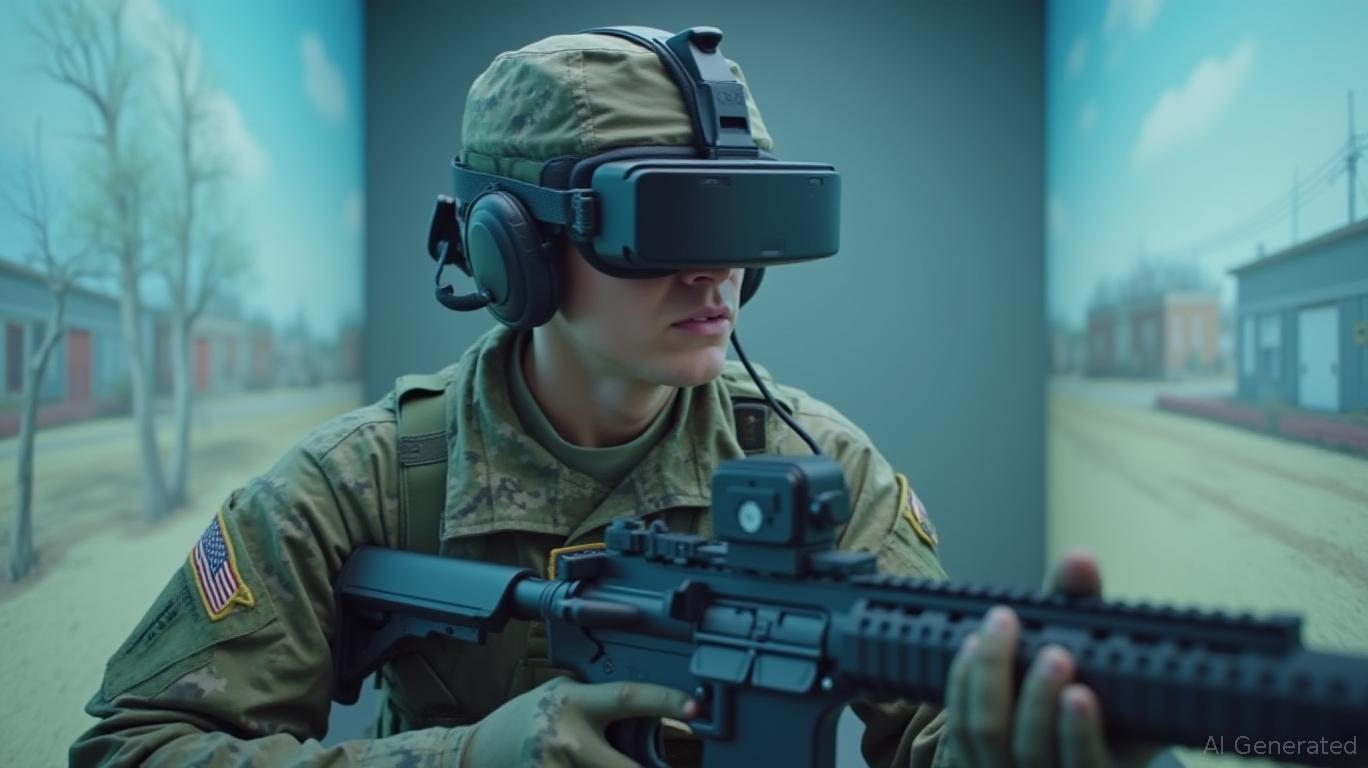The New Battlefield: How Meta-Anduril Convergence is Redefining Defense Tech Dominance
The U.S. military's pursuit of next-generation warfare is no longer confined to traditional defense contractors. A groundbreaking partnership between Meta Platforms Inc. (META) and Anduril Industries—a fusion of extended reality (XR) and AI-driven command systems—signals a seismic shift in how modern militaries harness commercial technology. This alliance, now at the forefront of defense innovation, offers investors a rare opportunity to capitalize on the convergence of artificial intelligence, augmented reality (AR), and autonomous systems.

The Symbiotic Power of Commercial Tech and Defense Startups
Meta and Anduril's collaboration exemplifies the strategic symbiosis between consumer tech giants and agile defense innovators. Meta brings its cutting-edge XR hardware and AI models (e.g., Llama), while Anduril's Lattice platform—already deployed in border surveillance and naval operations—provides real-time data aggregation and autonomous system control. Together, they are redefining battlefield intelligence: soldiers now interact with AI-powered drones, underwater vehicles, and tactical maps through hands-free AR interfaces, transforming decision-making from reactive to predictive.
This partnership is not merely about hardware. It represents a paradigm shift in defense spending, where private-sector R&D replaces costly government-funded programs. By leveraging commercially developed technologies, the U.S. Army reduces costs while accelerating innovation—a model that could disrupt traditional defense contracting.
The Scalability of Dual-Use Technologies
The true value lies in the dual-use potential of these tools. Meta's AR headsets and Anduril's AI systems are designed for both military and civilian applications. For instance:
- AR for logistics: Optimizing supply chains in war zones and urban centers alike.
- AI-driven command systems: Enhancing border security, disaster response, and autonomous vehicle coordination.
Consider Meta's $42.5 billion–$45.5 billion Q2 2025 revenue guidance, which includes investments in AI infrastructure and hardware like its Ray-Ban Meta AI glasses. This underscores the company's ability to scale its technology across sectors. Meanwhile, Anduril's partnerships—such as its collaboration with Microsoft's Azure cloud for the U.S. Army's IVAS program—demonstrate how military adoption can validate and amplify commercial viability.
Meta's share price has risen 10% year-to-date despite Reality Labs' operational losses, reflecting market confidence in its long-term tech bets.
The Investment Thesis: Positioning for Defense Tech Dominance
The Meta-Anduril model is a blueprint for companies poised to capture the $2.3 trillion global defense tech market. Key catalysts include:
1. Government Contracts: The U.S. Army's shift toward commercial off-the-shelf (COTS) solutions creates recurring revenue streams for firms that can adapt to military specs.
2. Geopolitical Demand: The U.S.-India Compact, including co-development of autonomous systems via the Autonomous Systems Industry Alliance (ASIA), opens new markets.
3. AI Infrastructure Leadership: Meta's undersea cable investments in the Indian Ocean and Anduril's AI partnerships (e.g., with Mahindra Group) create data ecosystems critical for real-time battlefield analytics.
Historical performance data further strengthens this thesis. A backtest analysis from 2020 to 2025 demonstrates that buying META on the announcement date of quarterly earnings releases and holding for 20 trading days resulted in an average return of 37.13%, underscoring the stock's potential during key financial milestones. While the strategy carried a maximum drawdown of -36.06%, its Sharpe ratio of 0.31 suggests investors were compensated for volatility risk, albeit moderately. This historical context reinforces the case for disciplined, earnings-driven entry points into META's stock.
Risks and Considerations
Skeptics point to regulatory hurdles—such as the EU's Digital Markets Act—and Meta's Reality Labs' $4.2 billion quarterly loss. Additionally, the stock's historical volatility, including a -36.06% maximum drawdown in earnings-driven trading strategies over the past five years, poses execution risks. However, these are short-term headwinds. The long-term tailwinds—military modernization budgets, AI adoption, and the dual-use economy—are too powerful to ignore.
Conclusion: The Time to Act is Now
The Meta-Anduril partnership is not just about VR headsets or drones—it's about owning the infrastructure of future warfare. Investors should recognize this as a generational opportunity: a confluence of AI, XR, and autonomous systems that will reshape defense spending for decades.
Investment Call to Action:
- Buy META: For exposure to AI-driven defense tech and its expanding military contracts. Historical backtests show strong returns around earnings announcements, but investors should account for volatility risks.
- Watch Anduril's IPO: Expected to capitalize on its Lattice platform's scalability.
- Consider Microsoft (MSFT): Its Azure cloud integration with IVAS positions it as a critical enabler of this ecosystem.
The battlefield of tomorrow is digital, connected, and AI-powered. Those who align with the pioneers of this transformation—Meta, Anduril, and their peers—will secure outsized returns. The time to invest in this convergence is now.
This article reflects the author's analysis and is not financial advice. Consult a professional before making investment decisions.

Comments
No comments yet